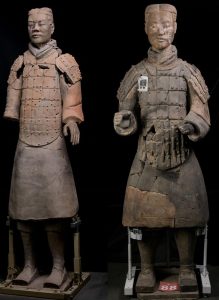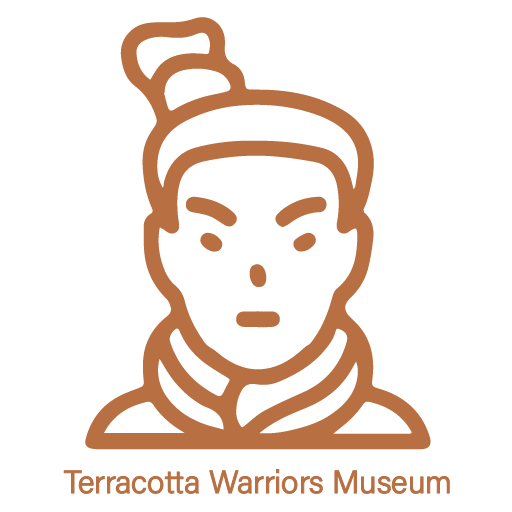Were China’s Terracotta Warriors Modelled on Real Soldiers?
Of course Not. In discussions about the mysterious and magnificent Terracotta Warriors, a terrifying rumor often spreads: The Terracotta Warriors were made from real people. What is the truth? Today, let’s clear the fog and find out.
Evidence 1: Manufacturing Process
Archaeological research clearly shows that the Terracotta Warriors were made by firing clay.
- The texture of the clay and firing marks from the broken parts and internal structures of the warriors.
- During production, craftsmen used a method of making parts separately and then assembling them. They first made parts like the head, torso, and limbs separately, and then assembled them carefully.
- For example, the head of a Terracotta Warrior, from the hair bun to the facial features, was carefully carved and then attached to the body.
- Also, the colors on the Terracotta Warriors were painted after firing. This series of processes clearly shows that the Terracotta Warriors were not made from living people.

Evidence 2: Scientific Detection Results
Modern scientific testing techniques have provided conclusive evidence to solve the mystery of the Terracotta Warriors’ production.
- Through component analysis of the Terracotta Warriors, it was found that their main component is clay, with no components of human tissue.
- Moreover, density tests on the Terracotta Warriors showed that their density is uniform, which is in line with the characteristics of pottery. If they were made from real people, the internal structure would surely be uneven due to the presence of human bones, organs, etc.
- The results of scientific tests indisputably rule out the possibility that the Terracotta Warriors were made from living people.
Evidence 3: Historical Background and Cultural Logic
- Based on the historical background, although the Qin Dynasty was powerful, Emperor Qin Shi Huang was also committed to national construction, such as building large – scale projects like the Great Wall.
These projects required a large amount of labor. If people were used to make the Terracotta Warriors, it would undoubtedly cause huge waste of human resources, which was contrary to the national development needs at that time.

Furthermore, from the perspective of cultural logic, the Terracotta Warriors were funerary objects of Emperor Qin Shi Huang’s Mausoleum, aiming to show his achievements in life and his post – death majesty. Craftsmen in the Qin Dynasty, with their superb skills, could create lifelike soldier figures with clay to achieve this goal.
- There was no need to use real people cruelly. And at that time, there was already a mature pottery – making technique. Making the Terracotta Warriors with clay was not only feasible but also could be mass – produced to meet the needs of the burial in Emperor Qin Shi Huang’s Mausoleum.
The Terracotta Warriors were not modelled on real people. Instead, they are art treasures created by ancient craftsmen with their wisdom and sweat, relying on advanced pottery – making techniques. They carry the history and culture of the Qin Dynasty, showing the world the glory and mystery of that era. When you visit the Terracotta Warriors one day, you will understand the story behind them more deeply.


